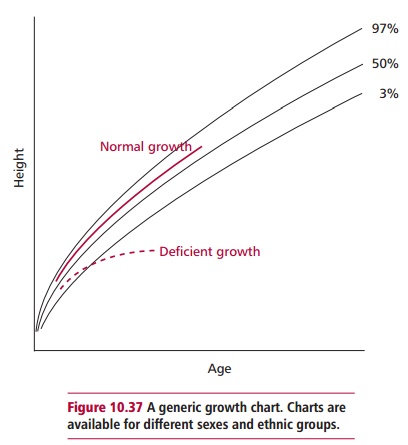Chapter: Biology of Disease: Diet and Disease
Protein-Energy Malnutrition - Investigating Nutritional Disorders
PROTEIN-ENERGY MALNUTRITION
A diagnosis of PEM must identify the type present. Individuals
affected by maramus present with decreased anthropometric measurements, loss of
muscle mass and body weight. There is also a decline in body temperature, pulse
and metabolic rate. Serum protein levels are often low but can be normal.
Children suffering from PEM have reduced rates of growth and are shorter,
particularly in marasmus, compared with their normal counterparts. This can be
easily assessed using charts of growth rates (Figure 10.37). They also have an impaired immune system, because of
reduced protein synthesis in particular of immunoglobulins, and, as a
consequence, infections such as measles that a child would normally be expected
to survive are common causes of death in severe cases. A diagnosis of
kwashiorkor is made following a thorough physical examination together with a
medical and dietary history. Patients affected with kwashiorkor have the
characteristic swollen abdomen, show hypoalbuminemia and a reduced lymphocyte
count or lymphopenia.

Related Topics